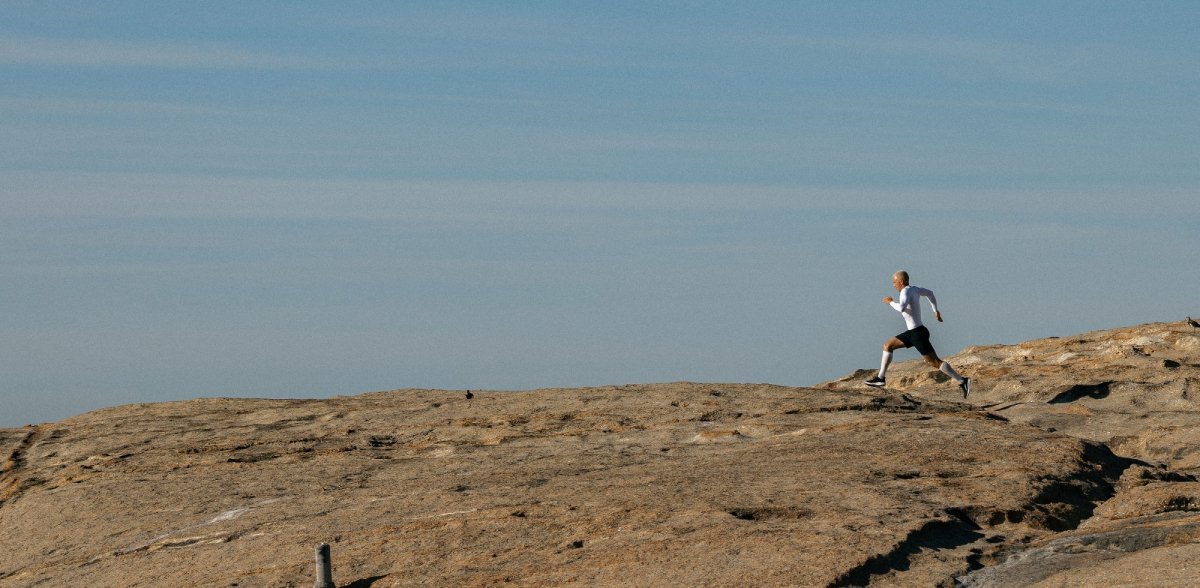TABLE OF CONTENTS
The Benefits of Core Training
Core Exercises: A List of Core Exercises
Getting Started with Core Exercises
Rest and Recover
How Long Should a Core Workout Be?
Core Exercises with Weights
Bodyweight Core Exercises
Conclusion
Your core is the foundation of your physical strength and stability, and core exercises can help improve and optimize several areas that lead to athletic improvements and benefits. In this article, we'll discuss the effects, benefits, and challenges of core training, including core exercises with weights, how long a core workout should be, and bodyweight core exercises.
THE BENEFITS OF CORE TRAINING
A strong core builds balance and improves strength and mobility. The human physical strength structure starts in the core, which is defined as the area from the torso down to your hips. The muscles in this section of your body are directly connected to (almost) all other muscle groups. In synergy with your bones and muscles in other areas of your body, the core section allows functional movements in any direction. This is why professional footballers – where mobility and flexibility to move in any direction at any sudden moment is the name of the game – spend a large proportion of their exercise efforts on their core. Furthermore, the muscles in your midsection protect your spine and allow you to have a stronger back. This means that most sports- or physical activities rely on stable core muscles. A complete core workout should, therefore, be an integrated part of a well-balanced exercise program.
Some of the benefits of core training include:
- Increased explosiveness, power, and strength
- Improved balance
- Injury prevention
- Better balance and stabilization of the torso
- Tighter and flatter stomach
- Improved efficiency and effectiveness of muscle groups working together across the full-body
- Improvement of spinal control and strength
- Stabilized and aligned spine, ribs, and pelvis
- Increased mobility
CORE EXERCISES: A LIST OF CORE EXERCISES
Core exercising accounts for all abdominal and back exercises such as push-ups, sit-ups, and abdominal crunches. These are exercises that use your trunk without support and strengthen and train your lower back, abdomen, hips, and pelvis to work together for better balance and stability. Examples of core exercises include:
- Plank
- Sit-ups
- Push-ups
- Crunches
- Lunges
- Mountain Climbers
- Squats
GETTING STARTED WITH CORE EXERCISES
To get started with core exercises, you might consider choosing 3-4 exercises with 3 sets of 10 reps each. Focus on form and increase the effort and intensity gradually as you progress. You can do this by including a resistance band which adds pressure during squats, lunges, push-ups, and sit-ups. Such a routine could look like this:
- Mountain Climbers. 3 sets, 10-12 reps (30-45 seconds rest)
- Crunches. 3 sets, 10-12 reps (30-45 seconds rest)
- Plank. 50-80 seconds.
REST AND RECOVER
It's important to remember to rest and recover after a core workout. Recovery can take from a day to a week. Overtraining a sore muscle group is ill-advised. We recommend focusing on other areas while allowing the trained muscle group to recover for 2-3 days. This also allows for a well-balanced exercise program.
HOW LONG SHOULD A CORE WORKOUT BE?
The length of your core workout will depend on your fitness level and goals. A good starting point is to aim for 20-30 minutes of core exercises 3 times a week. As you progress, you can increase the length and frequency of your core workouts.
CORE EXERCISES WITH WEIGHTS
Incorporating weights into your core exercises can add an extra challenge and help you build muscle strength and endurance. Some examples of core exercises with weights include:
- Weighted Sit-ups
- Russian Twists with a Medicine Ball
- Plank with Dumbbell Row
- Deadlifts
- Farmer's Walk
BODYWEIGHT CORE EXERCISES
Bodyweight core exercises are a great option for those who are new to core training or don't have access to weights. These exercises use your own bodyweight as resistance, making them easy to do at home or on the go. Some examples of bodyweight core exercises include:
- Plank
- Russian Twists
- Leg Raises
- Bicycle Crunches
- V-ups
CONCLUSION
Core exercises are an essential part of any fitness routine and can lead to stronger and more toned abdominal muscles, improved balance and stability, and increased mobility. Incorporating a variety of core exercises, including core exercises with weights and bodyweight core exercises, can help you achieve your fitness goals and improve your overall performance in sports and other physical activities. Remember to focus on form, increase the effort and intensity gradually, and make sure to rest and recover after each workout.







HOW TO FIT EXERCISE INTO A BUSY SCHEDULE: 4 TIPS FOR ACTIVE LIFESTYLE
DIET SECRETS OF ENDURANCE ATHLETES: HOW TO FUEL YOUR BODY FOR MAXIMUM PERFORMANCE